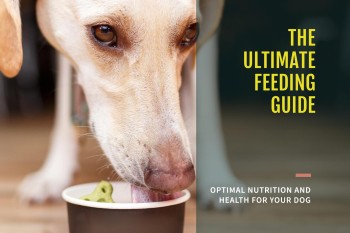- 10 Oct 2024
- Mitun Sarkar
How to Care for an Older Dog: Expert Tips for Senior Pet Health
As dogs age, their care needs change, and senior dogs require special attention to ensure they live healthy, happy, and comfortable lives in their golden years. Understanding how to care for an older dog is essential to prolong their life and enhance their quality of living.
This guide provides expert insights into senior dog care, covering everything from nutrition and exercise to mental well-being and medical care. Whether your dog is just entering their senior years or has been aging for a while, these tips will help you support them through every stage.
Understanding When Your Dog Is Considered a Senior
The definition of a “senior” dog can vary depending on the breed and size of your dog. Generally, smaller dogs tend to live longer and may not be considered seniors until they are around 10-12 years old, while larger breeds may be considered seniors as early as 6-7 years.
A senior dog’s health and care requirements change significantly as they grow older, so it’s important to monitor their health regularly and adapt their care routine to their changing needs.
Signs of Aging in Dogs
Knowing the signs of aging in dogs can help you identify when it’s time to adjust their care. Common signs that your dog is entering their senior years include:
- Decreased Energy Levels: Senior dogs often have less stamina and may tire more easily.
- Stiffness and Joint Pain: Conditions like arthritis become more common as dogs age, leading to slower movements and discomfort.
- Changes in Weight: Older dogs may experience weight gain due to slower metabolism or weight loss due to muscle mass decline.
- Gray Hair: Much like humans, dogs’ fur can turn gray, particularly around the muzzle and face.
- Decreased Vision and Hearing: Senior dogs may have trouble seeing or hearing, which can affect their responsiveness and behavior.
- Dental Problems: Gum disease and tooth decay become more common, leading to bad breath and difficulty eating.
Recognizing these changes early can help you manage their health and ensure they remain comfortable as they age.

Dietary Adjustments for Senior Dogs
Diet plays a crucial role in maintaining the health of an older dog. As dogs age, their nutritional needs change, and it’s essential to adjust their diet accordingly to support their aging bodies.
1. Choose a Senior Dog Food Formula
Many pet food companies offer specially formulated senior dog food that caters to the needs of aging dogs. These formulas often contain:
- Lower Calories: Senior dogs are less active, so they require fewer calories to maintain a healthy weight.
- Higher Fiber Content: To aid digestion and prevent constipation, senior dog food typically contains more fiber.
- Joint Support Ingredients: Ingredients like glucosamine and chondroitin are added to support joint health and ease arthritis pain.
- Antioxidants: To support the immune system, senior dog foods often include antioxidants like vitamin E and beta-carotene.
2. Monitor Portion Sizes
Older dogs are prone to weight gain due to their slower metabolism, so it’s important to monitor portion sizes carefully. Overfeeding can lead to obesity, which exacerbates joint pain and other age-related issues. On the other hand, underfeeding can lead to malnutrition or muscle loss, so finding the right balance is key.
3. Provide Supplements for Joint Health and Cognitive Function
As your dog ages, supplements can play an important role in their health. Glucosamine and chondroitin supplements help protect joint cartilage, while fish oil supplements provide omega-3 fatty acids that support brain health and reduce inflammation. Additionally, some cognitive supplements are designed to maintain mental sharpness and reduce symptoms of canine cognitive dysfunction.
Ensuring Regular Exercise and Mobility Support
Keeping your senior dog active is important for maintaining their muscle mass, joint flexibility, and overall well-being. However, the type and intensity of exercise should be adjusted to accommodate their physical limitations.
1. Low-Impact Exercise
For older dogs with joint pain or arthritis, low-impact exercises like swimming or gentle walks are ideal. Swimming is particularly beneficial because it helps build strength without putting pressure on the joints. You can also consider hydrotherapy, which is a therapeutic water-based exercise designed to improve mobility.
2. Shorter, More Frequent Walks
Instead of long, strenuous walks, take your senior dog on shorter, more frequent outings. This allows them to stay active without becoming too tired or sore.
3. Joint-Friendly Supportive Gear
Consider using supportive gear like a harness or orthopedic bed to help alleviate joint pain and ensure comfort. Raised food bowls can also reduce strain on the neck and joints when your dog is eating or drinking.
4. Massage and Physical Therapy
Massage can help relieve tension in your dog’s muscles and promote relaxation. Some senior dogs benefit from physical therapy, which may include stretches, range-of-motion exercises, or other treatments to improve mobility and reduce pain.
Addressing Common Health Issues in Senior Dogs
As dogs age, they become more susceptible to various health issues. Regular veterinary check-ups are essential for early detection and management of these conditions.
1. Arthritis and Joint Pain
Arthritis is one of the most common issues in older dogs, causing inflammation and stiffness in the joints. Managing arthritis involves a combination of weight management, low-impact exercise, joint supplements, and sometimes medication prescribed by your vet.
2. Canine Cognitive Dysfunction (CCD)
Similar to dementia in humans, canine cognitive dysfunction affects a dog’s memory, learning ability, and overall mental function. Symptoms may include disorientation, changes in sleep patterns, and confusion. To support cognitive health, consider using brain-enhancing supplements and engaging your dog in mental stimulation activities like puzzle toys.
3. Dental Disease
Older dogs are more prone to gum disease, tooth decay, and other dental issues. Regular brushing and dental cleanings are crucial to prevent infections that can affect your dog’s overall health.
Mental Stimulation for Senior Dogs
Just like physical exercise, mental stimulation is crucial for maintaining your senior dog’s cognitive function. As dogs age, they may lose some sharpness, but providing mental enrichment can help slow cognitive decline.
1. Interactive Toys
Puzzle toys and treat-dispensing toys are excellent for engaging your dog's mind. These toys encourage problem-solving and keep your dog entertained, especially if they’re less mobile than they used to be.
2. Training and New Tricks
It’s never too late to teach an old dog new tricks! Training sessions provide mental stimulation and strengthen the bond between you and your dog. Simple activities like learning new commands or playing scent games can engage your dog’s senses and challenge their brain.
3. Scent Work
Scent work is an enriching activity for dogs of all ages, but it’s especially beneficial for seniors who may not be as physically active. Hide treats around the house or yard and let your dog use their sense of smell to find them. This taps into their natural instincts and provides mental satisfaction.
Maintaining Regular Veterinary Care
Veterinary care becomes even more important as your dog enters their senior years. Regular check-ups allow your vet to monitor your dog’s health and catch any issues early on.
1. Senior Health Screenings
Your vet may recommend more frequent health screenings for older dogs, including blood tests, urine tests, and X-rays to detect common issues like arthritis, kidney disease, or heart conditions.
2. Dental Check-Ups
Older dogs are more prone to dental problems, which can lead to infections that impact their overall health. Regular dental cleanings and at-home dental care can prevent these issues.
3. Vaccinations and Preventative Care
While your senior dog may not need as many vaccinations as a younger dog, it’s still important to keep up with their core vaccines. Additionally, preventatives for parasites like fleas, ticks, and heartworms are essential to avoid health complications.
Managing Weight and Muscle Mass in Senior Dogs
Maintaining a healthy weight and preserving muscle mass is critical for senior dogs, as weight gain can exacerbate joint pain, and muscle loss can reduce mobility.
1. Weight Management
If your senior dog is gaining weight, consult with your veterinarian to determine the appropriate portion sizes and feeding schedule. Reducing calorie intake and increasing low-impact exercise can help prevent obesity.
2. Muscle Mass Preservation
To prevent muscle atrophy, ensure that your senior dog stays active with regular walks, playtime, and physical therapy if necessary. Resistance exercises, like walking uphill or on soft sand, can help strengthen muscles.
Adjusting Your Home Environment for Senior Dogs
As dogs age, their physical limitations may require you to make changes around the home to ensure their comfort and safety.
1. Orthopedic Bedding
Older dogs often suffer from joint pain, arthritis, or stiffness. Providing them with an orthopedic bed can help alleviate pressure on their joints, ensuring a more restful sleep. Look for beds made with memory foam or other supportive materials that contour to your dog’s body.
2. Non-Slip Flooring
Senior dogs may struggle to walk on slick surfaces like hardwood or tile floors, which can increase the risk of falls. To prevent slips, consider placing non-slip rugs or mats in areas where your dog frequently walks.
3. Elevated Food and Water Bowls
Bending down to eat or drink can be uncomfortable for dogs with neck or back pain. Elevated bowls make it easier for your senior dog to access their food and water without straining their joints.
4. Ramps or Stairs
If your senior dog enjoys lounging on the couch or bed, provide them with a ramp or dog-friendly stairs. This allows them to access higher surfaces without jumping, reducing strain on their joints and preventing injuries.
Ensuring a Comfortable and Supportive Environment
Creating a peaceful, supportive environment for your senior dog can greatly improve their quality of life.
1. Temperature Control
Older dogs may be more sensitive to extreme temperatures, so it’s important to keep your home at a comfortable temperature. During the winter, provide cozy blankets and heated beds, and in the summer, ensure they have access to cool, shaded areas to prevent overheating.
2. Quiet Spaces
As dogs age, they may become more sensitive to noise or changes in their environment. Designating a quiet, low-traffic area of your home as your dog’s resting spot can help them feel more secure and relaxed.
3. Routine and Predictability
Senior dogs benefit from a consistent routine, as sudden changes can cause anxiety or confusion. Stick to a regular schedule for feeding, walks, and playtime to help your dog feel more secure.
Understanding End-of-Life Care for Senior Dogs
As difficult as it is to think about, planning for the end of your dog's life is an important part of senior dog care. Understanding your options and knowing when to make difficult decisions can help ensure that your dog experiences dignity and comfort in their final stages.
1. Hospice Care for Dogs
For dogs nearing the end of their lives, hospice care focuses on maintaining comfort rather than extending life. This may involve managing pain, providing assistance with mobility, and ensuring they are well-cared for during their final days.
2. Recognizing the Signs of End-of-Life
Some signs may indicate that your dog is nearing the end, including:
- Loss of interest in food and water
- Difficulty breathing
- Inability to stand or walk
- Extreme lethargy or unresponsiveness Consult with your veterinarian to determine if your dog is suffering or if there are any treatments that could improve their quality of life.
3. Euthanasia and Saying Goodbye
When it becomes clear that your dog’s quality of life has diminished beyond repair, euthanasia may be the kindest option to prevent further suffering. Your vet can guide you through this process and ensure that it is as peaceful and painless as possible.
Caring for an older dog is both a responsibility and a privilege. By making the right adjustments to their diet, exercise routine, and living environment, you can ensure that your senior dog enjoys a healthy, happy, and comfortable life in their golden years.
For additional tips on dog nutrition and health, check out our blog on Feeding Your Dog for Optimal Health.

















